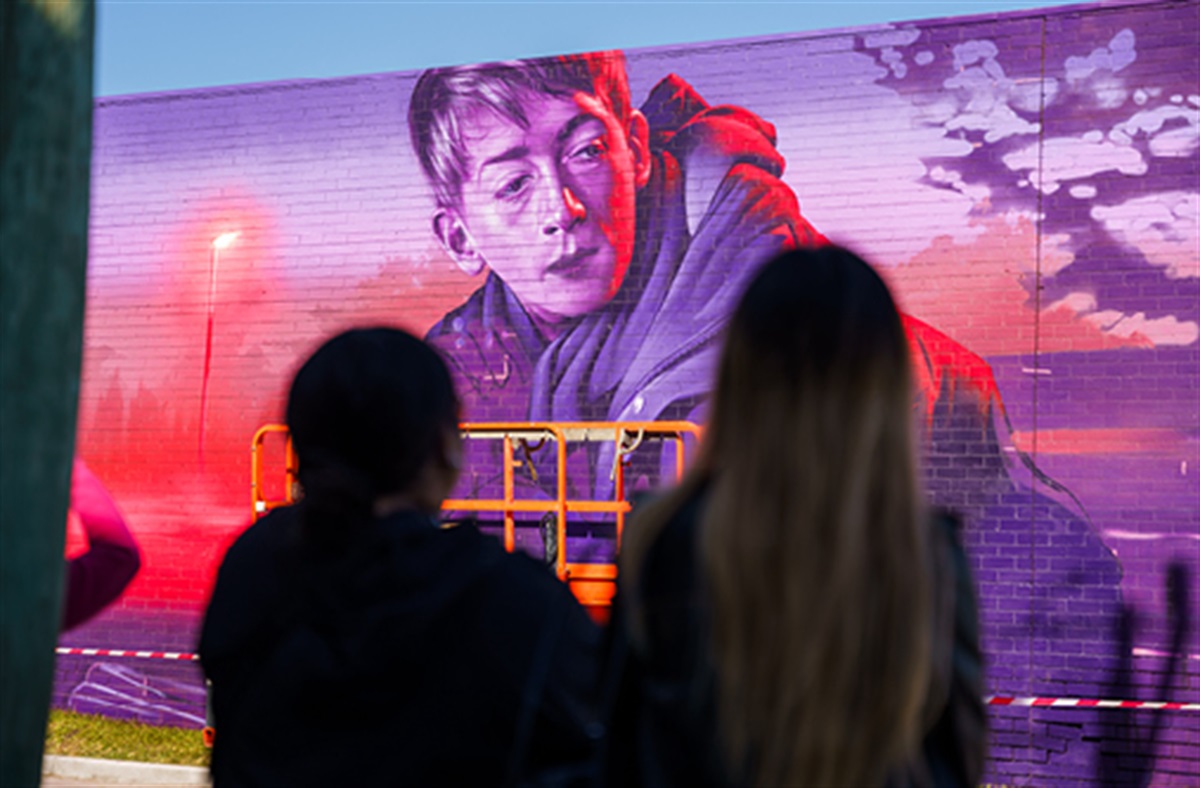Fire management is a critical part of the Australian Wildlife Conservancy’s (AWC) large-scale practical approach to conservation. Restoring ecologically appropriate fire regimes is the primary objective of managing fire on AWC sanctuaries and partnership properties.
AWC’s approach varies between regions and ecosystems: different strategies are required to manage fire in the Central Australian deserts to the tall, wet eucalypt forests of Mt Zero-Taravale, or in the tropical savannah woodlands of Cape York and the Kimberley.
In the northwest Regional Fire Coordinator Dale Tucker, along with other fire practitioners, land managers, ecologists and rangers from Dambimangari Aboriginal Corporation and Wilinggin Aboriginal Corporation manage a year-long program, undertaking strategic burning across 6.1 million hectares in the Kimberley.
 Jacob White/AWC
Jacob White/AWCFighting fire with fire
Fire has played an important role in the evolution and function of Australian landscapes for tens of thousands of years. Indigenous Australians used fire extensively, and many species and ecosystems have evolved to become dependent on regular or occasional exposure to fire.
Across our Kimberley sanctuaries and partnership areas, AWC conducts a complex, annual prescribed burning program in the early dry season to limit the spread of destructive wildfires that occur in the later part of the year – fighting fire with fire.
“The fire program involves burning in the early dry season, usually between the months of March, through to the end of July,” explains Dale. “These are called cool burns, they’re low and slow, low-intensity fires. We put in all those early-season burn scars across the landscape to mitigate the risk of large late-season wildfires. This time of year, you end up with lines of smaller fire scars -all the way across the landscape like a network of spiderwebs.”
Prescribed burning involves a range of techniques: matches, drip torches, and aerial incendiaries are used to ignite fires according to a strategic annual burn plan. Burning occurs generally in a small window of opportunity and relies heavily on timing and favourable weather conditions.
“We look at burning when the vegetation still has a relatively high moisture content. Depending on fuel age and vegetation, we want to be burning on days that have got a high humidity at night and very low wind speeds during the day, so the fires don’t travel very far. With the high humidity and cooler temperatures overnight, dew forms and the fires go out. That’s what we’re aiming for.”
 AWC
AWCThe science of fire
Designing where to burn is as complex as scheduling when. There are many factors to consider, and planning begins months in advance.
AWC works with our partners to implement the Kimberley fire program over the joint management areas of Wilinggin and Dambimangari Country. It is a team effort to design the season’s objectives, maintain culturally significant sites, meet Healthy Country Plans, and deliver measurable conservation outcomes.
“To start, we look at all the fire scars from the previous year using satellite data – which highlights all the fires that occurred in the landscape. From this data we produce a map that highlights where all these fires occurred in black which can be seen in the image above. We sit through this imagery with fuel ages, topographic features and a multitude of other layers layered on top and work out where best to carry out burning with the aim of keeping the fires that we put into the landscape as small and as low intensity as possible” says Dale.
“Once we’ve delivered the early dry season burning we’ll sit down again and use that map to plan how we go about responding to late-season fires. Whether that’s stitching gaps in fire scars or direct suppression. Once that’s all finished, and the rains begin we start to look at where we want to conduct our wet season burning and wait for the right window to burn. We are usually targeting older spinifex at this time of the year. As February rolls around we start the cycle off again.
The amount of fuel for the fires to burn is also a consideration. The team manage this by accessing data that shows how old the vegetation is and moving the planned ‘line of fire’ to maintain and protect patches of old-growth vegetation in the landscape, which provide shelter and food for wildlife, while crucially limiting the spread of destructive late season fires should they occur.
“The predominant wind in the Kimberley during the early dry season is East/South Easterlies so we run our burn lines on the right-hand side of one-year-old fuel, areas that burnt the year previously so that any fire we light is being pushed into that one-year-old fuel. It will go out because there’s not a lot of fuel for the fire to travel through.
“We’re not doing that across the whole area, but it’s a good way of keeping fire scars small yet still effective at stopping late-season fires. We’re trying to create a continuous network of fire scars across the landscape, but we’re trying not to burn too much as well.”
 Rod McGregor/AWC
Rod McGregor/AWCA year of floods, followed by flames
This year presented added challenges to the fire management teams. An unprecedented wet season, coupled with not one but two ex-tropical cyclones and extensive flooding across AWC’s Mornington-Marion Downs and Charnley River-Artesian Range Wildlife Sanctuaries saw the team readjust plans, and make contingencies for access and priorities.
The biggest obstacle this year was road access. With the wet season still drenching the landscape many roads were cut off – leaving planned fire base camps inaccessible – forcing the team to conduct operations from alternate destinations such as Derby.
La Niña’s three-year hold on Australia’s weather has resulted in wet seasons being longer and arriving earlier – narrowing the window of opportunity for dry season burning. As a result of three big wet seasons, across both Mornington and Dambimangari, there is a lot of old fuel – where grasses have grown and grown, but the understory is dead, this means they will burn hotter and will not go out if they ignite at the wrong time of year
Something Dale and his team are working tirelessly to prevent.








